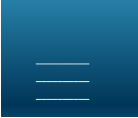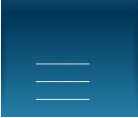
© Cambridge Orthopaedics - Cambridge; United Kingdom

Golfers elbow - Medial epicondylitis
Medial epicondylitis or golfers elbow is a lot rarer than tennis elbow (lateral epicondylitis), it presents with pain on the medial (inner) side of the
elbow.
It is made worse by increasing use/ activity and better with rest.
Although termed golfers elbow it is more common in overhead throwing athletes eg. baseball pitchers. Patients who exert a lot of stress on the
medial side of the elbow as in the cocking action when preparing to throw a ball.
Similar to the problem in tennis elbow, in golfers elbow the main flexor pronator muscles all attach to a very small point on the medial epicondyle.
Initially we thought it was an inflammatory condition, it has now been shown to result from tendinous microtearing followed by incomplete healing,
leading to a tendinopathy.
Repetitive use leads to degeneration of the tendon and then continued use and stress leads to a chronic situation where the tendons and muscles
never fully heal.
Not all medial sided elbow pain is golfers elbow. Injury to the ligaments on the inner side of the elbow can cause pain (medial collateral ligaments).
The ulna nerve which runs in the groove on the inner side of the elbow may also give pain on the inner side (see ulna nerve, ulnar neuritis).
Patients who do a lot of throwing may develop medial sided elbow pain which is slightly more posterior, this is caused by hyperextension valgus
overload (see throwing injuries).
Diagnosis
The pain is often insidious in onset, made worse with increased activity involving strong wrist and finger flexion.
Patients are tender just below the medial epicondyle and the pain is made worse on resisted flexion and pronation.
It is important to evaluate the ulna nerve and ensure the medial collateral ligaments are stable.
It is important to ensure the ulna nerve is not subluxing.
X rays may show some calcification of the medial collateral ligaments and are often used to exclude other cause of pain in the elbow (arthritis).
If the ulna nerve is involved then nerve conduction studies may be used to see if there is involvement of the ulna nerve (see Ulnar neuritis).
Treatment
Golfers elbow can be very difficult to treat and fully resolve.
Treatment in the first instance is non operative this includes:
•
Rest ( RELATIVE REST, doing absolutely nothing is just as bad as doing toomuch)
•
Activity modification (change the way you do things, avoid those thingsthat aggravate your elbow)
•
Analgesia ( see pain killers, predominantly the NSAIDS)
•
Splints (counterforce bracing – this helps spread the load)
Very similar to the braces fortennis elbow, in essence you want a clasp or strap that goesaround the forearm. Use it at all times if you have a lot of
pain. Thengradually wean yourself to a point where you use it only at the times of increasedstress on your arm.
•
Physiotherapy
The pathology is similar to tennis elbow, focus on stretches and gradual strengthening.
•
Injections
Steroid injections may help (I would avoid repeatedinjections as the steroid although good for reducing inflammation is not goodfor tendon healing
and repeated injections can damage the tendon. I offer 1maybe 2 injections but no more).
It is very important to be sure the ulna nerve is not subluxing before having an injection as a injection into the nerve is painful and may lead to long
term nerve damage.
•
Acupuncture, shock wave therapy and low intensity ultrasound has been tried but the evidence thus far does not conclusively support its use.
Surgery
Surgery is not a miracle cure, is usually only considered after 6 to 12 months of symptoms and failure to improve with non operative treatment
methods. Surgery often improves the elbow but does not totally eliminate the symptoms, improving it by 60-80%.
Surgery for golfers elbow is slightly different to that for tennis elbow.
As the ulna nerve is close by, and may be partially involved in the symptoms.
An open release and debridement of the tendons is performed, the ulna nerve is then addressed as required.
It is generally a day case procedure.
The surgery and the blood from the surgery initiates a fresh healing response. After the operation I do not use any splints or casts. You will have a
bulky bandage and sling for comfort if you need it.
You will be advised to use your elbow gently, lifting nothing heavier than a cup of tea for a few weeks, usually 3 weeks.
No strength work or heavy lifting for 6 weeks and then a graduated increase in activities to the 3 month mark.
Use your counterforce brace at times of increased stress initially.
Tendons that are gently stressed while healing will heal ultimately stronger than tendons not stressed while healing.
References
Physiotherapy for golfers elbow
Wrist Flexion. Place 1 lb. weight in hand with palm facing upward (supinated); support forearm at the edge of a table or on your knee so that only
your hand can move.
Bend wrist up slowly (concentric), and then lower slowly (eccentric).

© Cambridge Orthopaedics - Cambridge; United Kingdom
© Cambridge Elbow - Cambridge; United Kingdom
















